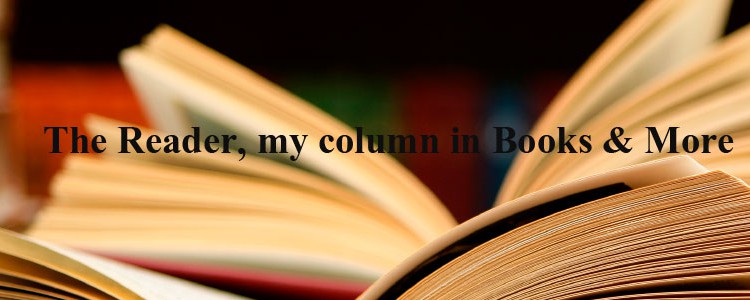The Reader, my column in Books & More
Reader
The sheer pleasure of immersing oneself in a book, flipping through its pages, dipping into it in parts, inhaling the heavenly smell of ink and freshly printed pages, stroking the cover to feel the design, are all part of the experience for me. It is fast becoming an equally thrilling adventure for my twenty-eight-month-old daughter, Sarah. She brings out her books and says, “Mummy padho.” What I find exhilarating is to see Sarah browse through the books that I owned as a child, to discover a fascinating new world. The spine of the book maybe falling apart, the pages have turned yellow and there are doodles done by me in pencil, years ago, but The Adventures of Winnie-the-Pooh continues to enchant Sarah, representative of a new generation of readers. These are tangible objects that she can touch, feel, flip the pages, trace the images and letters with her fingers, and crumple the pages…the first step to reading, recognising alphabets, words and creating a language and becoming a reader herself.
The modern reader, however, is faced with an over-abundance of choice. Today the market is flooded with books. There is a variety that is available to suit all reading sensibilities. Publishers are willing to experiment and develop lists, especially in the category of mass market fiction after the phenomenal (commercial) success of Chetan Bhagat, Advaita Kala or of Penguin’s Metro Reads. There is an abundance of fiction dealing with years spent in college or school like Arjun Rao’s Third Best or Amandeep Sandhu’s forthcoming novel, Roll of Honour. There is a wonderful variety in crime fiction ranging from Steig Larsson, Yrsa Sigurðardóttir, Lee Child, Madhulika Liddle, Andrew Lane, and Jo Nesbo to name a few. For a niche genre like historical fiction, Indian fiction in English is spoilt for riches with Indu Sundaresan’s Taj Trilogy, Chitra Bannerjee Divakurni’s Victory Song, Greta Rana’s Rana Women of Nepal, Alex Rutherford’s Empire of the Mughal series and an old one (but a classic) of Kiran Nagarkar’s Cuckold.
There are finer distinctions like chick-lit and narrative non-fiction that are doing well, but it does beg to ask the question, what is the profile of the reader of [for?] this literature. Who is this person/s? Who is buying these books? In spite of experimentation, publishers are careful of their bottom line and do not necessarily publish all that comes their way. Yet the examples cited illustrate that professional editors still have a good sense of the kind of books that will sell.
The other solution is to reach out to readers, make them part of the process. The internet and the blogosphere provide a range of opinions and at times provide a platform for literary tastemakers [who] to inform and shape the discourse. It is especially important for publishers to continually create a new generation of readers. It happens by creating targeted marketing campaigns, fostering and nurturing literary spaces. Literary soirees and book-launch parties are fashionable, but an engagement with the readers is a long term relationship. These could start early (as is happening with Sarah) or via book clubs, literary societies in institutions, or even literary festivals. The presence of efficient online book retailers that ensure an order gets shipped anywhere, anytime and at a reasonable cost to a customer, will only strengthen the reading environment. Today, with books available in a variety of formats, makes the profile of a reader even more difficult to ascertain. Yet, it is an exciting challenge for publishers. Anil Menon, author of The Beast with Nine Billion Feet says “reading might (in future) be a social act. A print book enforces a solitary experience. But I’ve noticed that when I’m reading on the Kindle, I can access other people’s comments if I feel like it. The solitary reader may be a thing of the past. Books written to facilitate social reading might be different from books written for the solitary reader. Children’s books– very young children– are already designed to be read by parents and children together. I can imagine books for teens written to be enjoyed in a group.” All these factors can only add up to the growing significance of the reader, who forms the market.
Jaya Bhattacharji Rose is an international publishing consultant.
(p.58, Books and More, June-July 2012)

